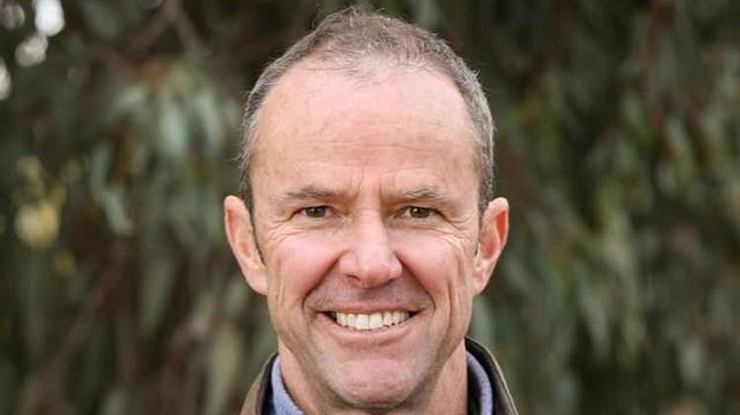 Beef producer Marcus Richardson believes the research from the Pastures for Carbon Neutrality program will support him to run a more ‘methane-friendly’ animal (one which emits less methane through better rumen function and by consuming lower emitting feed sources).
Beef producer Marcus Richardson believes the research from the Pastures for Carbon Neutrality program will support him to run a more ‘methane-friendly’ animal (one which emits less methane through better rumen function and by consuming lower emitting feed sources).
Southern NSW cattle producer Marcus Richardson has his sights set on as many options as possible to reduce his enterprise’s emissions.
After undertaking carbon baseline calculations through the Holbrook Landcare Network in 2021, Marcus discovered he was further from being carbon neutral than he anticipated, so his thoughts of selling carbon credits were unrealistic.
He said the challenge is to introduce carbon-reducing strategies which don’t have a negative impact on his production system, which have been developed in line with its landscape.
“We have about 4% trees and shrubs across our farm and around 25% would have to be planted to fast-growing plantation type trees to offset our emissions, which is different to our current plantings which were created for biodiversity and protection,” Marcus said.
“Some of the non-arable hills currently growing native grasses and trees could be suitable for offset planting but as well as requiring skills I don’t have, it would also change the use of those areas.
“Currently, the non-arable hills are used to carry female cattle through periods of low-energy requirement and to create fitness in pregnant heifers.
“A change in their use would have an impact on my production system.”
New research
Marcus welcomes research through the Pastures for Carbon Neutrality program which could support him to run a more ‘methane-friendly’ animal (one which emits less methane through better rumen function and by consuming lower emitting feed sources).
“A major rumen modification which markedly reduced or eliminated methane emissions in a grazing situation, and did not have an impact on growth or meat quality, would be ideal,” he said.
“If this currently lost energy was converted into additional growth, it would be a bonus. Longer term, this may be able to be gained through genetic selection of superior animals.”
For the time being, Marcus will focus on production efficiency by improving pregnancy rates, growth rates of pastures, efficient use of fertiliser and animals and reducing animal wastage.
He is also exploring planting 5ha to new trees to create Australian Carbon Credit Units (ACCUs) and entering into a conservation agreement for a grassy box woodland area.
Nine actions to start reducing livestock emissionsProducers can start to reduce on-farm emissions straightaway. Here are nine strategies from the Pastures for Carbon Neutrality researchers: 1. Know your baseline. Use the available tools to establish your current emissions – a. b. c. . 2. Maximise production – aim for all animals to reach target weights faster and more efficiently. 3. Improve herd efficiency by culling unproductive stock, improving animal health, removing older, possibly infertile, stock and optimising reproductive capacity. MLA’s have practical livestock management resources. 4. Improve feed base efficiency through effective management of soil constraints, such as acidity, with correct species selection, optimal plant nutrition and good grazing strategies. Visit MLA’s |






